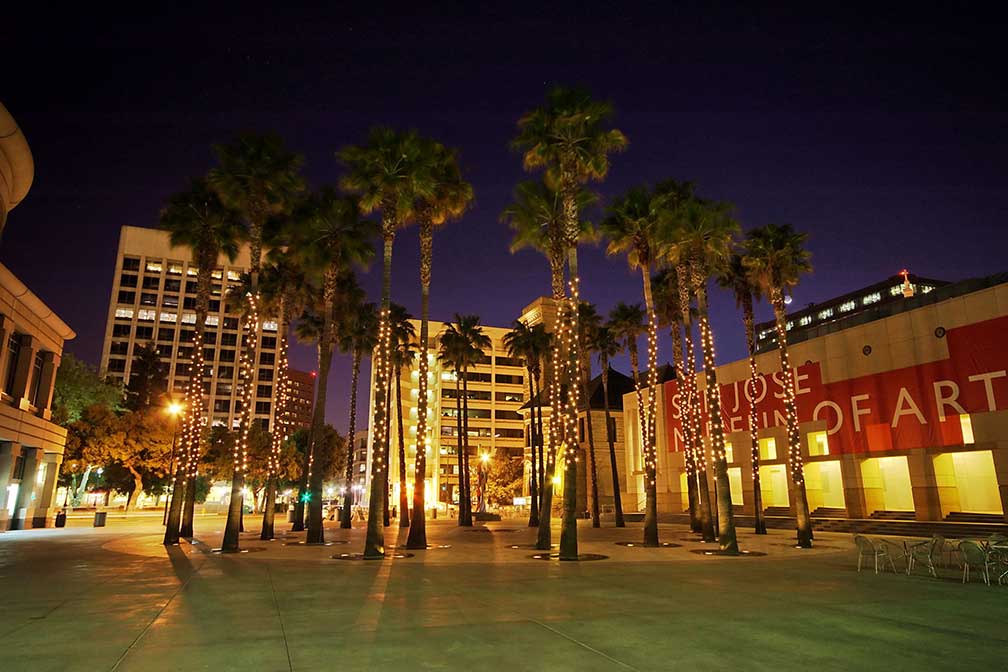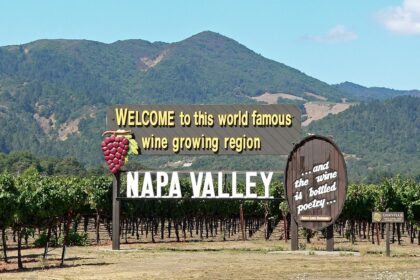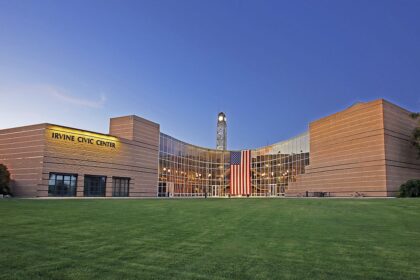San Jose is the cultural, financial, and political center of Silicon Valley and largest city in Northern California by both population and area. Take a look below for 20 fascinating and interesting facts about San Jose, California, United States.
1. With a 2020 population of 1,013,240, it is the most populous city in both the San Francisco Bay Area and the San Jose-San Francisco-Oakland Combined Statistical Area, which contain 7.7 million and 9.7 million people respectively, the third-most populous city in California (after Los Angeles and San Diego), and the tenth-most populous in the United States.
2. Located in the center of the Santa Clara Valley on the southern shore of San Francisco Bay, San Jose covers an area of 179.97 sq mi (466.1 km2).
3. San Jose is the county seat of Santa Clara County and the main component of the San Jose–Sunnyvale–Santa Clara Metropolitan Statistical Area, with an estimated population of around two million residents in 2018.
4. San Jose is notable for its innovation, cultural diversity, affluence, and sunny and mild Mediterranean climate.
5. Its connection to the booming high tech industry phenomenon known as Silicon Valley sparked Mayor Tom McEnery to adopt for the city the motto of “Capital of Silicon Valley” in 1988.
6. Major global tech companies including Cisco Systems, eBay, Adobe Inc., PayPal, Broadcom, Samsung, Acer, Hewlett Packard Enterprise, and Zoom maintain their headquarters in San Jose. San Jose is one of the wealthiest major cities in the world, with the third-highest GDP per capita (after Zürich and Oslo) and the fifth-most expensive housing market.
7. It is home to the world’s largest overseas Vietnamese population, a Hispanic community that makes up over 40% of the city’s residents, and historic Japanese and Portuguese neighborhoods.
8. Before the arrival of the Spanish, the area around San Jose was inhabited by the Tamien nation of the Ohlone peoples of California.
9. San Jose was founded on November 29, 1777, as the Pueblo de San José de Guadalupe, the first city founded in the Californias.
10. It then became a part of Mexico in 1821 after the Mexican War of Independence. Following the American Conquest of California during the Mexican–American War, the territory was ceded to the United States in 1848.
11. After California achieved statehood two years later, San Jose became the state’s first capital.
12. Following World War II, San Jose experienced an economic boom, with a rapid population growth and aggressive annexation of nearby cities and communities carried out in the 1950s and 1960s.
13. The rapid growth of the high-technology and electronics industries further accelerated the transition from an agricultural center to an urbanized metropolitan area. Results of the 1990 U.S. Census indicated that San Jose had officially surpassed San Francisco as the most populous city in Northern California.
14. By the 1990s, San Jose had become the global center for the high tech and internet industries, making it California’s fastest-growing economy.
15. San Jose is named after el Pueblo de San José de Guadalupe (Spanish for “the Town of Saint Joseph on the Guadalupe”), the city’s predecessor, which was eventually located in the area of what is now the Plaza de César Chávez. In the 19th century, print publications used the spelling “San José” for both the city and its eponymous township.
16. On December 11, 1943, the United States Board on Geographic Names ruled that the city’s name should be spelled “San Jose” based on local usage and the formal incorporated name.
17. In the 1960s and 1970s, some residents and officials advocated for returning to the original spelling of “San José”, with the acute accent on the “e”, to acknowledge the city’s Mexican origin and Mexican-American population. On June 2, 1969, the city adopted a flag designed by historian Clyde Arbuckle that prominently featured the inscription “SAN JOSÉ, CALIFORNIA”.
18. On June 16, 1970, San Jose State College officially adopted “San José” as the city’s name, including in the college’s own name. On August 20, 1974, the San Jose City Council approved a proposal by Catherine Linquist to rename the city “San José” but reversed itself a week later under pressure from residents concerned with the cost of changing typewriters, documents, and signs.
19. On April 3, 1979, the city council once again adopted “San José” as the spelling of the city name on the city seal, official stationery, office titles and department names. As late as 2010, the 1965 city charter stated the name of the municipal corporation as City of San Jose, without the accent mark, but later editions have added the accent mark.
20. By convention, the spelling San José is only used when the name is spelled in mixed upper- and lowercase letters, but not when the name is spelled only in uppercase letters, as on the city logo. The accent reflects the Spanish version of the name, and the dropping of accents in all-capital writing was once typical in Spanish. While San José is commonly spelled both with and without the acute accent over the “e”, the city’s official guidelines indicate that it should be spelled with the accent most of the time and sets forth narrow exceptions, such as when the spelling is in URLs, when the name appears in all-capital letters, when the name is used on social media sites where the diacritical mark does not render properly, and where San Jose is part of the proper name of another organization or business, such as San Jose Chamber of Commerce, that has chosen not to use the accent-marked name.




